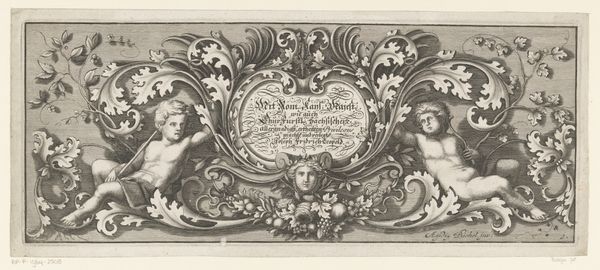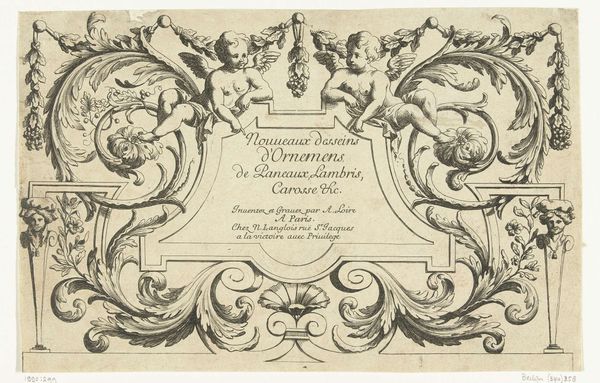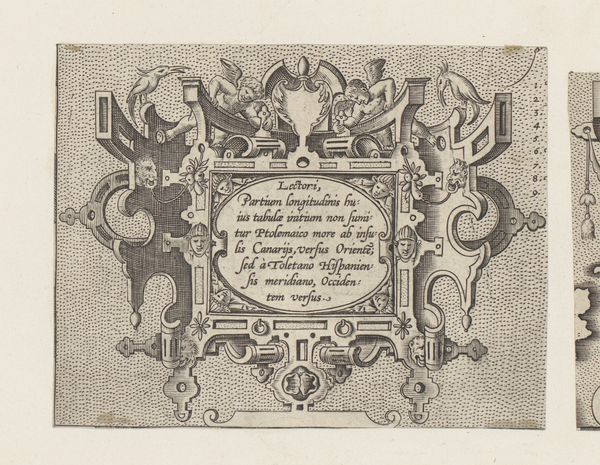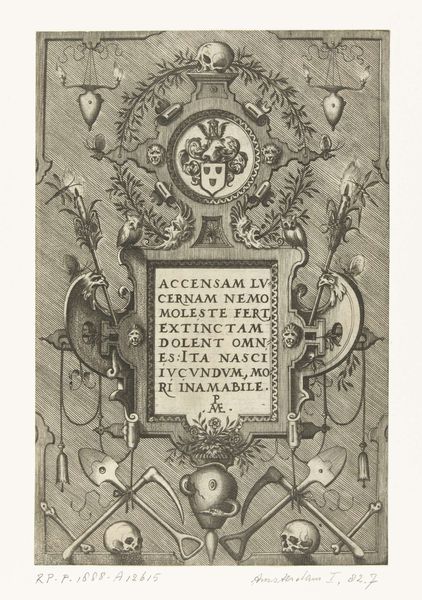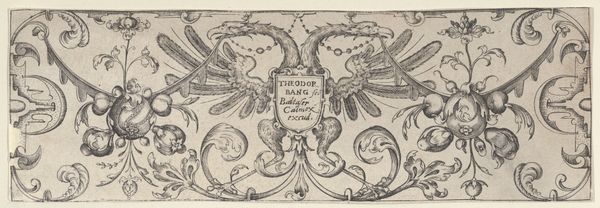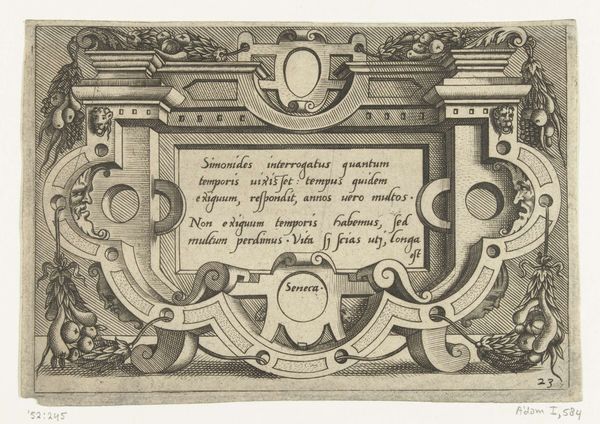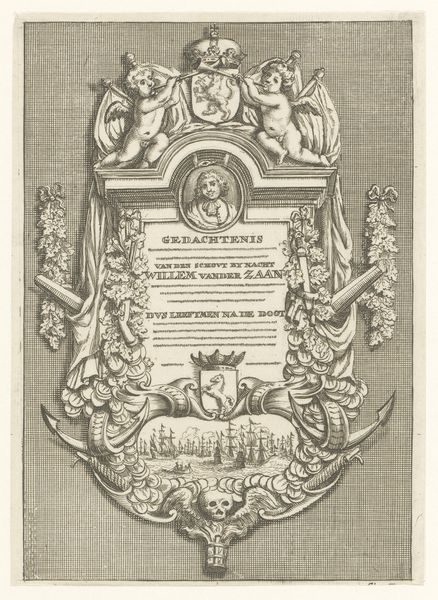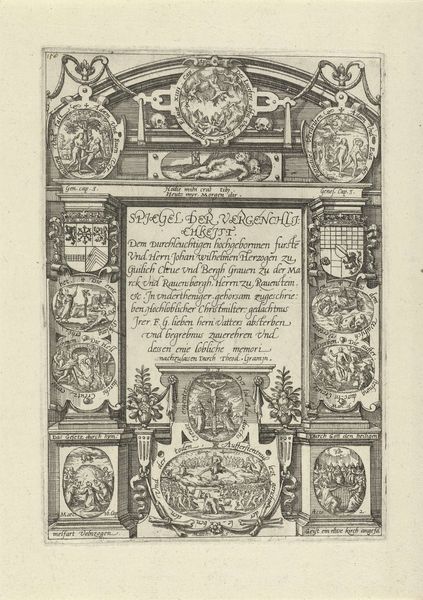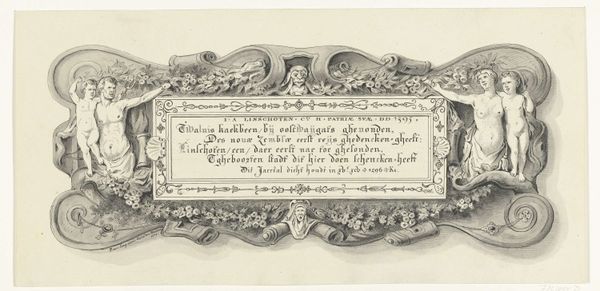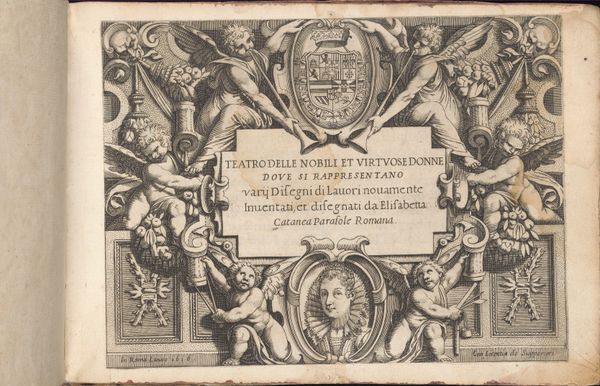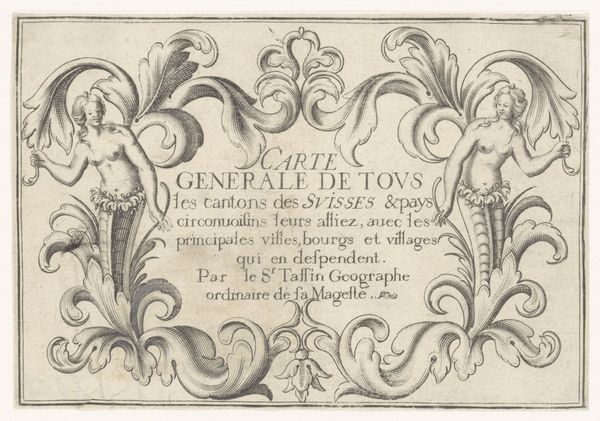
drawing, graphic-art, print, engraving
#
drawing
#
graphic-art
# print
#
pen illustration
#
old engraving style
#
history-painting
#
engraving
Dimensions: Plate: 10 1/16 × 16 9/16 in. (25.5 × 42.1 cm) Sheet: 11 1/2 × 18 1/8 in. (29.2 × 46 cm)
Copyright: Public Domain
Curator: The piece before us, titled "Title to the Entry into Hemissem," was created around 1650 by Wenceslaus Hollar. The medium is engraving, a form of graphic art that allows for incredibly detailed lines and shading. Editor: My first impression is one of ornate formality. It’s visually dense, framed by these decorative elements, with a very pronounced textural contrast from the precise engravings to the implied softness of the fruits and winged figure at the top. Curator: Precisely. Hollar was a master engraver, and here we see the skill involved in producing multiple identical prints for dissemination. He likely had to collaborate with various workshops for paper, ink and printing press expertise. Considering his patrons within noble circles, the print functions as both art object and marker of class. The elaborate cartouche is fascinating when understanding the power structures of the era. Editor: Yes, these cartouches were quite important for visually communicating social status and patronage networks! It would've been consumed by the elite as evidence of social status, demonstrating the power dynamics and aristocratic tastes in display. I am also intrigued by this choice of presenting history in such an elaborate display that shows it should be received with honor. The angel and heraldic imagery add layers of authority, solidifying a specific understanding and glorification of that family. Curator: Hollar was working during a period of significant social and political upheaval; thinking about the cost and availability of materials for engravings helps us comprehend their limited access to certain audiences. Each decision to print or display this title was laden with economic considerations for that specific noble family! The distribution method also played a role – did he directly gift it, was it sold at market etc.. These details shape our view of 17th-century artistic labor. Editor: Seeing art through this material perspective also forces us to question any simplistic interpretations of historical subjects depicted. How many views and readings existed then as it travels through audiences across classes in society that aren't the initial audience? Curator: Exactly, such pieces should spark dialogues around the means and limitations surrounding art-making back then! Editor: I agree. Looking closer reminds me how such visual works act as mirrors that both showcase and actively construct ideologies that endure even now!
Comments
No comments
Be the first to comment and join the conversation on the ultimate creative platform.
